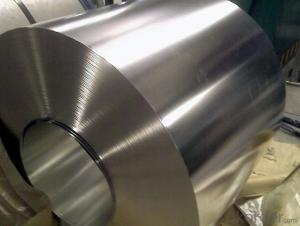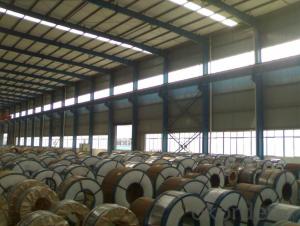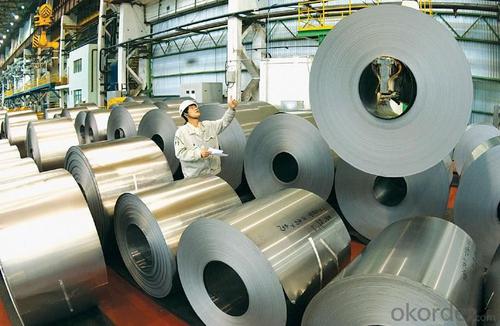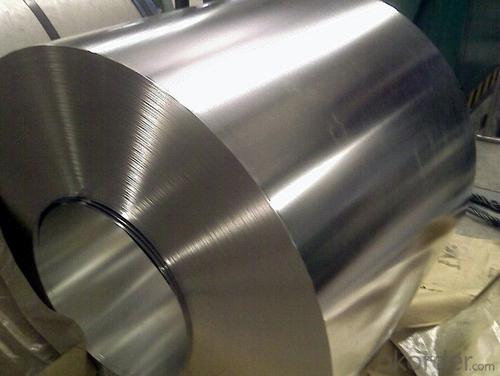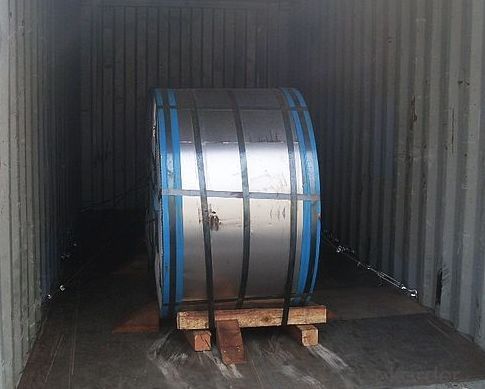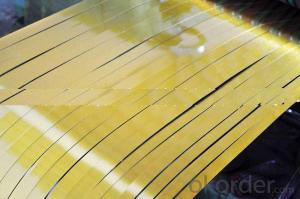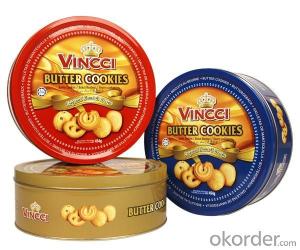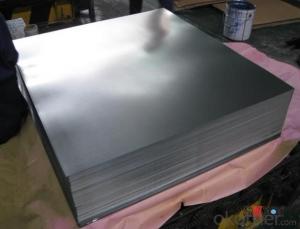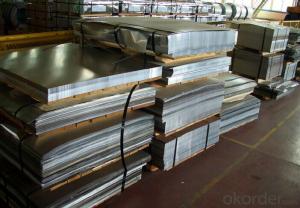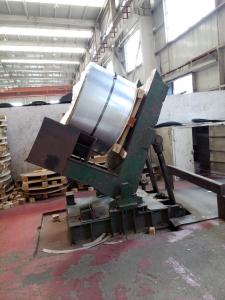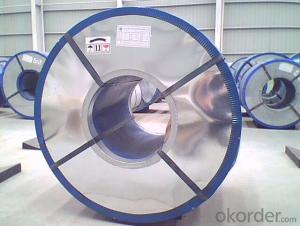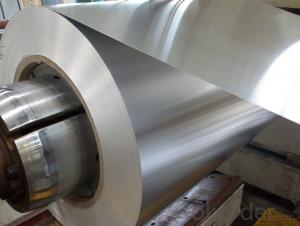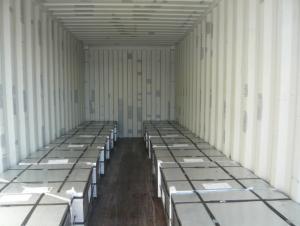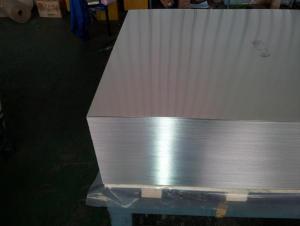Electrolytic Tinplate Coil for Food Cans Packing
- Loading Port:
- Tianjin
- Payment Terms:
- TT OR LC
- Min Order Qty:
- 25 m.t
- Supply Capability:
- 7000 m.t/month
OKorder Service Pledge
OKorder Financial Service
You Might Also Like
1.Structure of Electrolytic Tinplate Coil for Food Cans Packing Description
Electrolytic Tin Plate Coils and Sheets for Foods Metal Packaging, is one thin steel sheet with a coating of tin applied by electrolytic deposition. Tinplate made by this process is essentially a sandwich in which the central core is strip steel. This core is cleaned in a pickling solution and then fed through tanks containing electrolyte, where tin is deposited on both sides. As the strip passes between high-frequency electric induction coils, it is heated so that the tin coating melts and flows to form a lustrous coat.
2.Main Features of the Electrolytic Tinplate Coil for Food Cans Packing
Appearance – Electrolytic Tin Plate is characterized by its beautiful metallic luster. Products with various kinds of surface roughness are produced by selecting the surface finish of the substrate steel sheet.
Paintability and printability – Electrolytic Tin Plates have excellent paintability and printability. Printing is beautifully finished using various lacquers and inks.
Formability and strength – Electrolytic Tin Plates have got very good formability and strength. By selecting a proper temper grade, appropriate formability is obtained for different applications as well as the required strength after forming.
Corrosion resistance – Tinplate has got good corrosion resistance. By selecting a proper coating weight, appropriate corrosion resistance is obtained against container contents. Coated items should meet 24 hour 5 % salt spray requirement.
Solderability and weldability – Electrolytic Tin Plates can be joined both by soldering or welding. These properties of tinplate are used for making various types of cans.
Hygienic – Tin coating provides good and non toxic barrier properties to protect food products from impurities, bacteria, moisture, light and odours.
Safe – Tinplate being low weight and high strength makes food cans easy to ship and transport.
Eco friendly – Tinplate offers 100 % recyclability.
Tin is not good for low temperature applications since it changes structure and loses adhesion when exposed to temperatures below – 40 deg C.
3.Electrolytic Tinplate Coil for Food Cans Packing Images
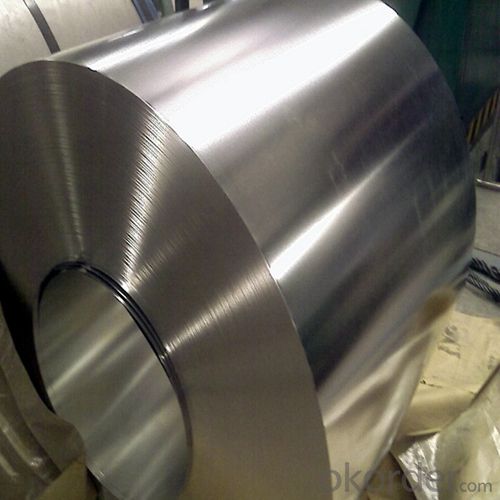
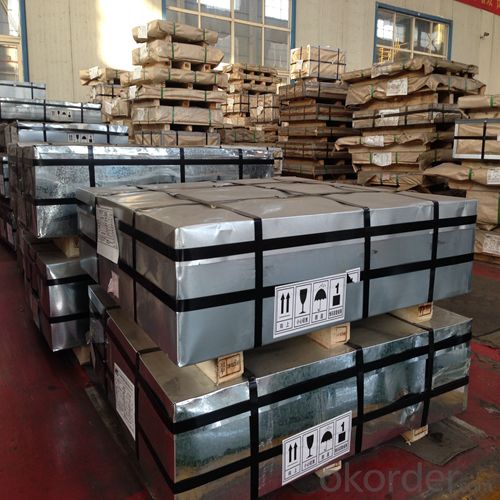
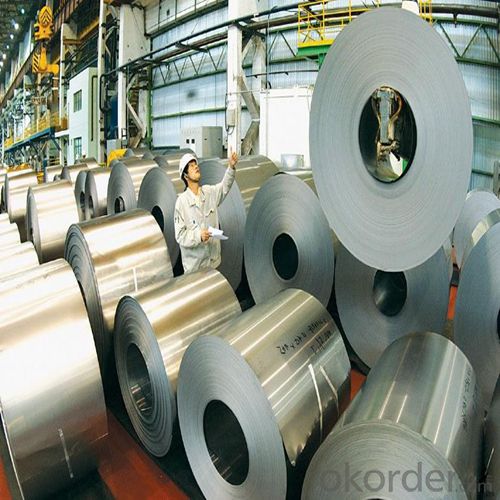
4.Electrolytic Tinplate Coil for Food Cans Packing Specification
Standard | ISO 11949 -1995, GB/T2520-2000,JIS G3303,ASTM A623, BS EN 10202
|
Material | MR,SPCC |
Thickness | 0.15mm - 0.50mm |
Width | 600mm -1150mm |
Temper | T1-T5 |
Annealing | BA & CA |
Coil Inner Diameter | 508mm |
Weight | 6-10 tons/coil 1~1.7 tons/sheets bundle |
Passivation | 311 |
Oil | DOS |
Surface | Finish,bright,stone,matte,silver |
5.FAQ of Electrolytic Tinplate Coil for Food Cans Packing
- How are the Electrolytic Tin Plates specified?
The Electrolytic Tin Plates are specified as per the steel base, extent of tempering, the coating weight, annealing method and the surface finish.
- How many types there are for base steels?
The base steels are of three types: Type MR, L, D
- Q: Can tinplate be used for medical packaging?
- Yes, tinplate can be used for medical packaging. Tinplate is a durable and corrosion-resistant material, making it suitable for protecting and preserving medical products. It meets the necessary hygiene and safety standards required for medical packaging and can provide an effective barrier against moisture, light, and oxygen. Additionally, tinplate is recyclable, making it an environmentally friendly choice for medical packaging.
- Q: What are the main safety regulations for tinplate production and use?
- The main safety regulations for tinplate production and use include ensuring proper handling and storage of tinplate materials, conducting regular maintenance and inspections of equipment to prevent accidents, implementing proper ventilation systems to control fumes and dust, providing personal protective equipment (PPE) to workers, and following established protocols for waste disposal to minimize environmental hazards. Additionally, tinplate manufacturers and users must comply with occupational health and safety standards, such as providing training programs for employees, promoting safe work practices, and adhering to local and international regulations governing the production and use of tinplate products.
- Q: What are the different ways to open tinplate containers?
- There are several ways to open tinplate containers, including using a can opener, a key, a sharp knife, or even a spoon to pry open the lid.
- Q: Can tinplate be used for furniture applications?
- Yes, tinplate can be used for furniture applications. It is a versatile material that offers durability and resistance to corrosion, making it suitable for various furniture components such as frames, panels, or decorative elements. Tinplate's malleability allows for intricate designs, while its smooth surface can be easily painted or coated to match any desired aesthetic.
- Q: What are the main trends in tinplate packaging?
- Some of the main trends in tinplate packaging include the increasing demand for sustainable and eco-friendly packaging solutions, the rise of convenient and innovative packaging designs, and the incorporation of advanced technologies for improved product protection and preservation. Additionally, there is a growing preference for personalized and customized tinplate packaging to enhance brand identity and consumer engagement.
- Q: Can tinplate be painted?
- Yes, tinplate can be painted.
- Q: What are the advantages of using tinplate for promotional items?
- Tinplate offers several advantages for promotional items, including its durability, versatility, and visual appeal. It is a sturdy material that can withstand rough handling, making it ideal for long-lasting promotional products. Additionally, tinplate can be easily molded into various shapes and sizes, allowing for unique and creative designs. Its glossy finish provides an attractive and eye-catching appearance, enhancing the overall appeal of promotional items.
- Q: How does tinplate compare to aluminum in terms of properties and applications?
- Tinplate and aluminum have distinct properties and applications. Tinplate is made of steel coated with a thin layer of tin, providing excellent corrosion resistance and forming properties. It is commonly used for food and beverage packaging, as well as for decorative purposes. On the other hand, aluminum is a lightweight metal with high strength-to-weight ratio, corrosion resistance, and excellent thermal and electrical conductivity. It is widely used in industries such as construction, transportation, and electronics. While both materials have their unique advantages, the choice between tinplate and aluminum depends on specific requirements and the intended application.
- Q: What are the main quality standards for tinplate?
- The main quality standards for tinplate include thickness, coating weight, surface finish, and adhesion. These standards ensure that tinplate meets the required strength, corrosion resistance, and aesthetic properties necessary for its various applications such as food packaging and industrial uses.
- Q: What are the main applications of tinplate in the household goods industry?
- Tinplate is commonly used in the household goods industry for various applications such as food and beverage packaging, storage containers, kitchenware, and decorative items. Its corrosion resistance, durability, and ability to seal in freshness make it an ideal material for cans, jars, and tins. Additionally, its versatility allows for the creation of aesthetically pleasing and functional household items like trays, buckets, and utensils.
Send your message to us
Electrolytic Tinplate Coil for Food Cans Packing
- Loading Port:
- Tianjin
- Payment Terms:
- TT OR LC
- Min Order Qty:
- 25 m.t
- Supply Capability:
- 7000 m.t/month
OKorder Service Pledge
OKorder Financial Service
Similar products
Hot products
Hot Searches
Related keywords

